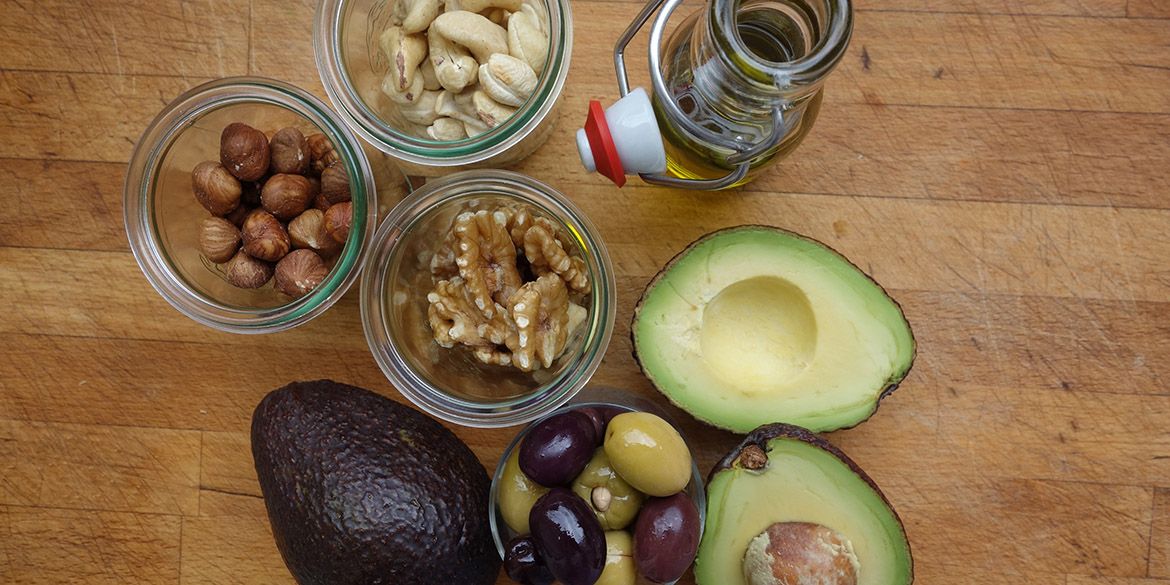Understanding Fat Breakdown A Comprehensive Exploration

Fat breakdown is a complex biochemical process that plays a crucial role in the body’s energy production and metabolism. This intricate process involves the breaking down of lipid molecules, commonly known as fats, into simpler components, allowing the body to utilize them as fuel or store them for future energy needs. In this article, we will delve deeper into the world of fat breakdown, exploring the role of enzymes, the pathways involved, and its significance in our overall health.
Fat Breakdown
Fat breakdown, also known as lipolysis, is the process by which fats are broken down into smaller components for absorption and utilization by the body. Fats are an essential macronutrient that provides the body with energy, insulation, and protection for vital organs. However, when consumed in excess, fats can lead to weight gain and other health issues. Therefore, understanding how fat breakdown works is crucial in maintaining a healthy balance.
The Role of Enzymes in Fat Breakdown
At the heart of fat breakdown are specialized enzymes known as lipases. These enzymes act as catalysts, increasing the rate of fat breakdown into a form that the body can absorb and metabolize. Lipases function by cleaving the ester bonds that hold fatty acids to glycerol molecules, resulting in the release of individual fatty acids and glycerol.
There are several types of lipases involved in fat breakdown, including pancreatic lipase, hepatic lipase, and lipoprotein lipase. Each of these enzymes has a specific role in the breakdown of different types of fats, such as dietary fats, stored fats, and fats transported in the bloodstream.
Fat Breakdown Pathway
The breakdown of dietary fat begins in the small intestine, where it undergoes digestion and absorption. Pancreatic lipase, an enzyme secreted by the pancreas, initiates the hydrolysis of dietary triglycerides, breaking them down into free fatty acids and monoglycerides. These emulsified products are aided by bile acids, facilitating their passage through the intestinal wall and into the bloodstream.
Once absorbed into the bloodstream, fatty acids are transported to the liver, where they may undergo further breakdown, modification, or storage. The liver plays a crucial role in regulating fat metabolism, as it is responsible for producing lipoproteins, which transport fats throughout the body.
Fat Breakdown Products
The end products of fat breakdown are fatty acids and glycerol. These components are then utilized by the body for various functions. Fatty acids can be used as a source of energy by cells, while glycerol is converted into glucose for energy production. Additionally, fatty acids are also essential for the synthesis of hormones, cell membranes, and other vital molecules in the body.
Fat Breakdown Enzyme
As mentioned earlier, lipases are the enzymes responsible for fat breakdown. Let’s take a closer look at some of the key enzymes involved in this process.
Pancreatic Lipase
Pancreatic lipase is the primary enzyme responsible for the breakdown of dietary fats. It is secreted by the pancreas into the small intestine, where it hydrolyzes triglycerides into free fatty acids and monoglycerides. This enzyme requires bile acids for optimal activity, which are produced by the liver and stored in the gallbladder.
Lipoprotein Lipase
Lipoprotein lipase (LPL) is an enzyme found on the surface of cells that line blood vessels. Its main function is to break down triglycerides in lipoproteins, such as chylomicrons and very-low-density lipoproteins (VLDLs), into fatty acids and glycerol. These fatty acids are then taken up by cells for energy production or storage.
Adipose Triglyceride Lipase
Adipose triglyceride lipase (ATGL) is a key enzyme involved in the breakdown of stored fats in adipose tissue. It catalyzes the first step in the breakdown of triglycerides, converting them into diglycerides and fatty acids. These fatty acids are then released into the bloodstream and transported to other tissues for energy production.
Fat Breakdown into Energy
Fat breakdown plays a crucial role in providing the body with energy. Fatty acids are the preferred source of fuel for many cells, including muscle cells, which use them for energy during physical activity. When the body’s demand for energy increases, such as during exercise or fasting, fat breakdown is upregulated to meet this demand.
The process of converting fatty acids into energy occurs in the mitochondria, also known as the powerhouse of the cell. Here, fatty acids undergo beta-oxidation, a series of biochemical reactions that break down fatty acids into acetyl-CoA molecules. These acetyl-CoA molecules then enter the Krebs cycle, a series of reactions that produce ATP, the body’s primary energy currency.
The Impact of Artificial Intelligence on the Automotive Industry
Artificial Intelligence in the Automotive Industry Revolutionizing Mobility and Efficiency
Fat Breakdown in Eggs
Eggs are a popular food choice, and they contain a significant amount of fat. But how does fat breakdown occur in eggs? The yolk of an egg contains about 5 grams of fat, primarily in the form of triglycerides. When consumed, these triglycerides are broken down by pancreatic lipase and bile acids in the small intestine, just like any other dietary fat.
Once absorbed into the bloodstream, these fatty acids are transported to the liver, where they may be used for energy production or stored for future use. Interestingly, eggs also contain lecithin, a type of phospholipid that acts as an emulsifier, aiding in the digestion and absorption of fats.
Fat Breakdown Machine
The human body is a complex machine, and fat breakdown is just one of the many processes that occur within it. However, several factors can affect the efficiency of this process, leading to various health issues.
Genetics
Genetics plays a significant role in determining how efficiently our bodies break down fats. Some individuals may have genetic variations that result in reduced lipase activity, making them more prone to weight gain and other metabolic disorders.
Diet
The type and amount of fat consumed in the diet can also impact fat breakdown. Diets high in saturated and trans fats have been linked to increased risk of obesity, heart disease, and other health issues. On the other hand, diets rich in unsaturated fats, such as omega-3 fatty acids, have been shown to improve fat metabolism and overall health.
Hormones
Hormones play a crucial role in regulating fat metabolism. Insulin, for example, promotes the storage of fat, while glucagon stimulates fat breakdown. Imbalances in these hormones, such as in conditions like diabetes, can lead to disruptions in fat breakdown and utilization.
Fat Breakdown Injections
In recent years, there has been a rise in the use of fat breakdown injections, also known as lipolytic injections, as a cosmetic procedure to reduce body fat. These injections contain a synthetic form of deoxycholic acid, a bile acid that helps break down fats in the small intestine.
When injected into targeted areas, such as under the chin or around the waist, these injections are believed to destroy fat cells, resulting in a slimmer appearance. However, the long-term effects and safety of these injections are still being studied, and they should only be administered by a licensed medical professional.
Fat Breakdown of Olive Oil
Olive oil is a staple in many diets, particularly in Mediterranean cuisine. It is a rich source of monounsaturated fatty acids, which have been linked to numerous health benefits. But how does fat breakdown occur in olive oil?
Olive oil is primarily composed of oleic acid, a monounsaturated fatty acid that is broken down by lipases in the small intestine. Once absorbed into the bloodstream, oleic acid is transported to cells, where it can be used for energy production or incorporated into cell membranes.
Fat Breakdown Medical Term
The medical term for fat breakdown is lipolysis, derived from the Greek words “lipos” meaning fat and “lysis” meaning breaking down. This term is commonly used in the medical field to describe the process of breaking down fats into smaller components for absorption and utilization by the body.
Fat Cell Breakdown
Fat cells, also known as adipocytes, are specialized cells that store fat in the form of triglycerides. When the body requires energy, these triglycerides are broken down into fatty acids and glycerol through the process of lipolysis. These fatty acids are then released into the bloodstream and taken up by cells for energy production.
However, when the body is in a state of excess energy, such as during weight gain, fat cells increase in size and number to accommodate the extra fat. This process is known as adipogenesis, and it can lead to obesity and other health issues if not managed properly.
Saturated Fat Breakdown
Saturated fats are a type of dietary fat that is solid at room temperature. They are found in animal products, such as meat and dairy, as well as in some plant-based foods, such as coconut oil. These fats have been linked to an increased risk of heart disease and other health issues.
The breakdown of saturated fats occurs in the same way as other dietary fats, with pancreatic lipase and bile acids playing a crucial role. However, due to their chemical structure, saturated fats are more difficult to break down, making them more likely to be stored in the body.
Belly Fat Breakdown
Belly fat, also known as visceral fat, is a type of fat that accumulates around the abdominal organs. It has been linked to an increased risk of various health issues, including heart disease, diabetes, and certain cancers. Therefore, reducing belly fat is a common goal for many individuals.
The breakdown of belly fat occurs through the same process as other types of fat, with lipases breaking down triglycerides into fatty acids and glycerol. However, due to its location and composition, belly fat can be more challenging to break down and may require lifestyle changes, such as diet and exercise, to reduce its accumulation.
Fat Chemical Breakdown
The chemical breakdown of fats involves the hydrolysis of ester bonds by lipases, resulting in the release of fatty acids and glycerol. This process is essential for the absorption and utilization of fats by the body. Additionally, the chemical structure of different types of fats can impact their breakdown and utilization in the body.
For example, unsaturated fats, which have double bonds in their chemical structure, are more susceptible to oxidation and rancidity than saturated fats. This is why foods high in unsaturated fats, such as nuts and seeds, should be stored properly to prevent spoilage.
Conclusion
Fat breakdown is a vital process that allows the body to utilize fats for energy production and other essential functions. Enzymes play a crucial role in this process, breaking down fats into smaller components for absorption and utilization. Understanding how fat breakdown works can help us make informed choices about our diet and lifestyle, leading to better overall health and well-being. So next time you reach for that slice of pizza or pour some olive oil on your salad, remember the intricate process of fat breakdown happening within your body.













